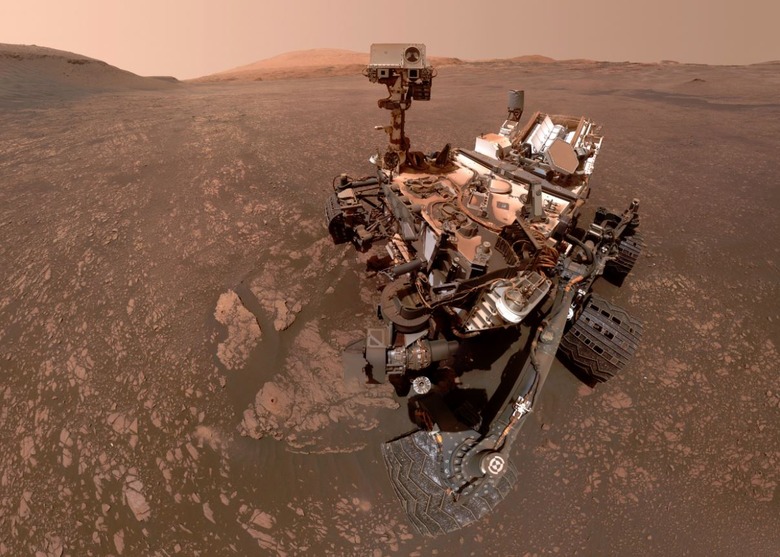Nobody Knows What's Creating Oxygen On Mars
NASA's Curiosity rover returned some seriously surprising data to Earth earlier this year, with readings of elevated methane levels that were hard to explain. Subsequent tests attempted to pin down the cause of the higher-than-expected readings but scientists have yet to come up with a definitive answer.
Now, as questions about methane continue to swirl, scientists studying the behavior of gasses on Mars have noticed that oxygen on the Red Planet also acts much differently than it does on Earth. The observations were made in the Gale Crater, which the rover has called home since it landed there back in 2012.
Curiosity "breathes" the air on Mars and analyzes it to determine the levels of various types of gasses that are present. On Earth, the background levels of certain gasses rise and fall with seasons, and the same seems to be true on Mars, but only to a point.
The air on Mars is largely carbon dioxide. In fact, a full 95% of the gas Curiosity breathes in during its tests is CO2. The remaining 5% is a mix of nitrogen, argon, oxygen, and carbon monoxide. By plotting levels of these gasses over the course of a full Martian year, scientists have noticed anomalies with regard to the amount of oxygen, relative to other gasses.
NASA explains:
Within this environment, scientists found that nitrogen and argon follow a predictable seasonal pattern, waxing and waning in concentration in Gale Crater throughout the year relative to how much CO2 is in the air. They expected oxygen to do the same. But it didn't. Instead, the amount of the gas in the air rose throughout spring and summer by as much as 30%, and then dropped back to levels predicted by known chemistry in fall.
The fact that the oxygen levels vary as wildly as they do is significant because it hints at as-of-yet undiscovered processes at work on the surface of the planet. For the oxygen levels to see a significant upward spike and then a dramatically fall, something must be creating it and then another something is using it.
"We're struggling to explain this," Melissa Trainer of NASA's Goddard Space Flight Center says. "The fact that the oxygen behavior isn't perfectly repeatable every season makes us think that it's not an issue that has to do with atmospheric dynamics. It has to be some chemical source and sink that we can't yet account for."
Before you start dreaming of a subterranean race of Martian monsters, it's important to know that this isn't a smoking gun for life on Mars. In fact, it's far from it. There are natural processes that can generate oxygen in the absence of life, and since we have yet to find evidence of life on the Red Planet, yet can't rule it out, scientists are considering all possible options.
